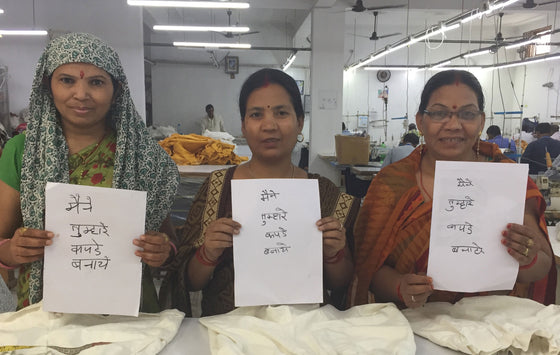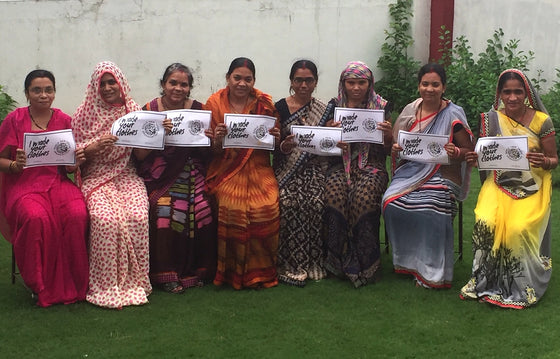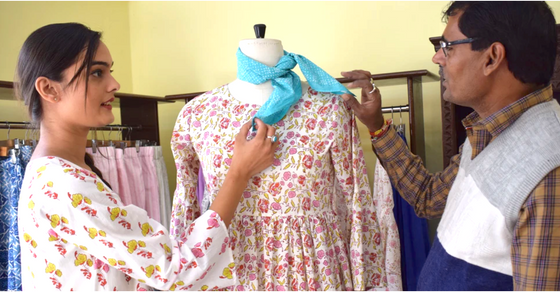12 Tips for Collaborating with India's Artisans
November 07, 2015
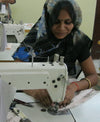
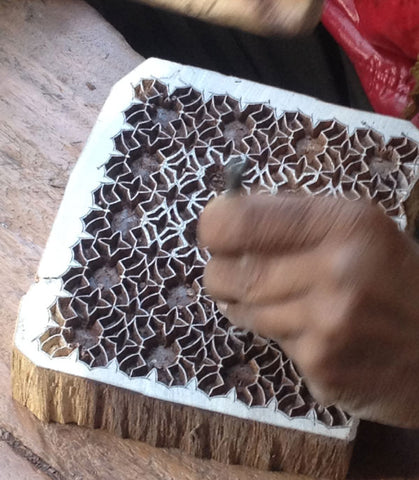
“Made in India”
Tips for fair-trade manufacturing in India
BY SUSAN CABA & SHARI KELLER, PH.D.
Shari Keller believes the adjective “fair” in the phrase “fair trade” should be redundant.
The word “trade,” she says, means the buying and selling of goods and services. Good faith, integrity and equitable pay for value should be a given on both sides of any transaction. But she is an idealist--not naive.
She is well aware that Western-based manufacturers and merchants have historically taken advantage of low wage expectations in developing countries, to keep manufacturing costs low and increase profits on finished goods. She’s an ardent advocate of ending the financial exploitation of those workers. Going further, she aims to preserve and improve their traditional lifestyles.
Mehera Shaw is an artisan-inspired, sustainable clothing brand, as well as a fair-trade manufacturer based in Jaipur, India. Shari and Mark Keller established the clothing brand in 1999, and opened a manufacturing facility in 2007. They were inspired by the region’s distinctive textiles, particularly the hand-block prints on cotton—an traditional artisan skill with a centuries-old history.
The company is a member of the U.S. Fair Trade Federation, and conforms to standards for transparency and equitable employee wages and benefits. Whenever possible, Mehera Shaw uses certified organic cottons made in India, as well as AZO-free dyes. The company is also working to meet the environmental requirements of India and international fair-trade organizations.
The significance of “fair” in "fair trade" is a commitment to protect those who do not otherwise have a voice in their industry, or an ability to protect their rights in the workplace. The ideal behind the fair trade concept is to create a safety net for workers.
The fair trade movement has gained strength over the past two decades. While there are Western companies who use the designation as a public relations asset, with no real commitment to fair trade principles, many embrace the principles but don't have the understanding needed to put them fully into action. Newcomers are often not attuned to the cultural, geographic and financial differences that must be navigated in order to successfully do business in India.
Both of the Kellers--neither one an ethnic Indian, both U.S.A.-born and raised--have deep, long-standing roots in India's culture. Part of Keller’s mission is sharing her cross-cultural business perspective with Western-based companies, in order that all parties will be successful in establishing truly fair East-West trade relationships. Here are some of her guidelines for working with India's artisan suppliers.
12 must-know business principles
for successful fair-trade relationships
-
ABOVE ALL, RECOGNIZE CULTURAL DIFFERENCES.
The Western world is structured primarily around business schedules. Rightly or wrongly, community activities and family life in Western countries are relegated to evenings, weekends and scheduled two-week vacations. The hours from 9 to 5, Monday through Friday are reserved for business. Not so in India. Festivals, seasonally severe weather, unreliable power supplies and religious and state holidays can be important considerations in the manufacturing process.
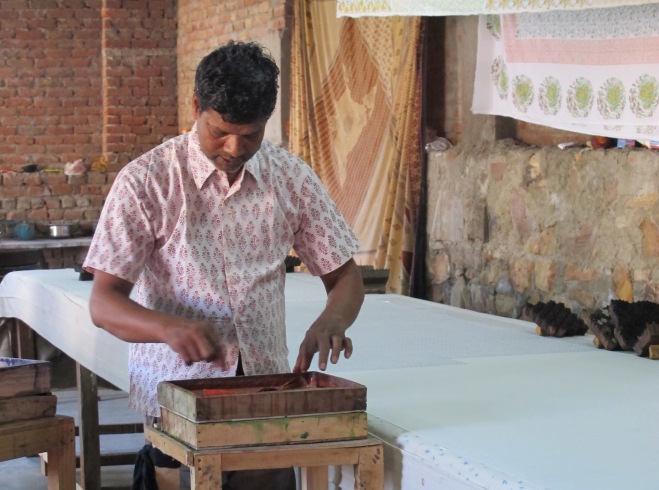
- The printing and drying process is affected by the weather, especially monsoons
For example, Mehera Shaw has to plan its printing schedule around the festivals of Holi, Diwali and the monsoon rain season. If the company accepts a print order at the beginning of summer, it has to be sure the fabric can be sourced and printed before the fall monsoons disrupt the schedule. Holi can cause a major setback, as the company’s block printers may travel to their native villages for the festival and then allow their visits to stretch to a week or more. And a wedding in the family is not merely a weekend affair.
In the U.S., such disruptions and delays wouldn’t be tolerated. In India, they are realities that must be recognized and taken into consideration. Don’t rely on tight schedules for deliverables!
-
YOUR WAY OR THE HIGHWAY? NOT!
Be ready, willing and eager to learn from the manufacturer and artisans. “Trade,” after all, means “give and take.” What works in the West may be impossible in a developing country, or in a culture influenced by different traditions, business practices—or even the weather.
Until you’ve lived through monsoons in a city in which electricity is sporadic or roads are unpaved, you may not understand how production schedules can be affected by what you might consider a simple rain storm. Trusting relationships are built on a willingness to learn how your partner works most effectively, what obstacles they face and what values they hold dear. Your investment in human relationships will result in increased value added to your product.
Ideally, you’ll visit your supplier and spend a few days getting to know the people, the process and the environment in which the supplier and artisans work and live. You’ll get to know them and they’ll get to know you. More often than not, you’ll have a fascinating learning experience in a part of the world with which you aren’t familiar.
-
BE REALISTIC ABOUT WHAT’S POSSIBLE. ADJUST DESIGNS TO FIT REALITY.
When you understand the block-printing or screening process, you also understand their limitations. Adapting your designs to those limitations—especially early in your relationship with the manufacturer—will yield the best possible results. Over time, you’ll learn to take advantage of those perceived limitations to enhance the quality of your product and achieve your “dream” collection.
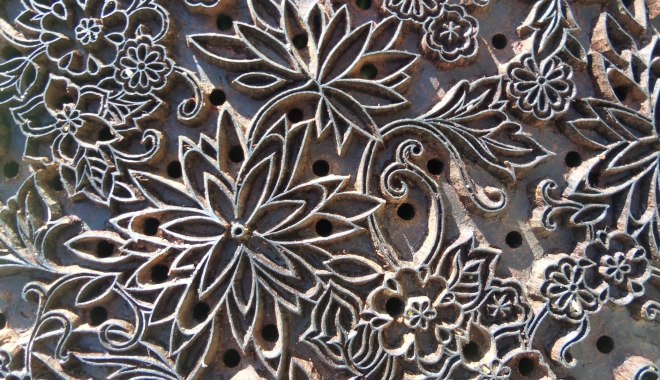
- The blocks used for custom fabrics are hand-carved, often in intricate patterns
Mehera Shaw once worked with a designer who had developed a design, with a number of fine lines and details, for screen printing. But her schedule required the work be done during the rainy season. Keller knew the design wouldn’t turn out well because of longer drying times caused by high humidity. Sure enough, in a test run, the fines lines and details were lost and the overall effect was blurry. The designer was under a tight deadline, so she worked with the printers to reinvent her design to have an intentionally indistinct, blurry effect which could be achieved in high humidity.
Because she adjusted her concept and worked with the printers on a creative solution, her collection was well-received. Her relationship with Mehera Shaw continued to be successful.
Mehara Shaw has had the opposite experience, too, when a designer—against all advice—insisted on ordering an intricate block print design at the height of the monsoon season. She became upset when the predicted weather-related delays did, indeed, occur. She was even more annoyed when, despite a stream of email communications and photos, the print didn't meet her unrealistic expectations. Ultimately, because she didn’t rely on the knowledge and advice of Mehera Shaw’s experts, she wasn’t able to develop a top-quality collection.
That, says Keller, hurts everyone’s long-term business. As a result, Mehera Shaw tries to vet its customers for their ability to accept limitations and work through them as a team. The aim is for everyone involved to be successful.
-
“LIVING” COLOR VERSUS CHEMICAL DYES
This is another instance in which understanding the characteristics of the dye process helps a designer make the most of its good qualities and avoid problems caused by its limitations.
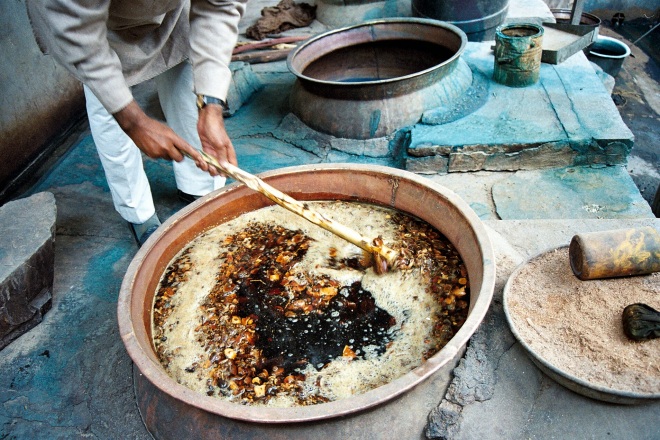
- Mehera Shaw hand-mixes vegetable dyes for block-printing organic fabric
Natural indigo, for example, creates beautiful blues but it can be tricky to obtain consistent results in small batches. Also, the natural version of indigo isn’t colorfast enough to be used for trousers, but works fine as a scarf. It's not a good idea to insist on a dark shade of indigo, without taking the function of the end garment into consideration. You'll be disappointed when the product doesn't sell.
It helps to educate customers on the nuances and characteristics of “living colors,” which change over time, and the desirable “imperfections” of a print made by human hands rather than machines.
Every new project has a learning curve. Be prepared to work creatively as part of a team that meets challenges together. With time, feedback and on-going collaboration, a designer can adjust future collections for ever-more pleasing results.
A variety of factors affect production schedules and the small supplier’s ability to meet tight deadlines. Some may be cultural, some depend on the climate and others relate to peak production demands tied to the fashion industry’s seasonal nature.
You’ll be most successful—and suffer far less stress—if you take these factors into consideration early. Commit to your fabric and print choices far enough in advance so that a small supplier can get the work done before the rainy season, if weather may affect production.
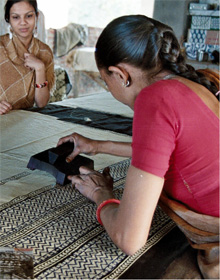
- Creating beauty by hand requires patience and time
Keep your part of the fair trade agreement—you want the special beauty of a hand-crafted product. Your supplier strives to give you what you want at a reasonable cost. But he or she must also provide healthy working environments, reasonable schedules and good wages while maintaining a sustainable business model that produces workable profits.
When a buyer puts off a decision on fabric, makes last minute changes or places an impossibly large order with short notice, the supplier is going to feel pressure to hire more tailors or impose longer working hours to meet the completion dates. Short lead times also increase delivery costs for the supplier who has to meet a tight deadline.
Mehera Shaw, like many small companies, has to juggle production orders carefully in order to keep everyone busy during slow periods but not over-worked during peak demand seasons. Designers should see themselves as collaborators in the supply chain process, rather than simply end users who place a non-negotiable order to be fulfilled without question. That is the deeper meaning of “trade.”
-
START WITH SMALL PROJECTS, EVALUATE, ADJUST, INNOVATE AND SCALE UP
Artisan production is scale-able once the designer and supplier have finalized a design that’s appropriate to the technique and skill levels available, and run a few small orders to determine the timing and difficulty level of production. Use these initial projects to establish your relationship with the supplier, and develop your understanding of what’s possible in terms of quality, color and design.
A wise designer starts with a small order, and confers with the dye master and printers to produce the best results. A successful design depends on the type of fabric used—silk or cotton; the printing process—screen prints or block prints; the properties of the particular dye, and production conditions. Some extraordinary results may be possible at great effort, even when the combination is difficult. But the cost may not be supported by the end market.
Once your relationship is established, you and the supplier can scale up, introduce new elements and explore innovations that may require additional training for the artisans. Adding new elements and increasing the size of your orders gradually, as a small percentage of your overall collection, limits the chances for misunderstanding or misinterpretations. You'll be able to design most effectively, the more you understand the skills and processes involved in production. Think of yourself as an organic farmer who provide produce to fine restaurants--you couldn't be successful without an understanding of which vegetables grow in which soil, during what seasons.
-
BE AWARE THAT SMALL IS SOMETIMES HARDER THAN BIG.
Manufacturers can’t always get the fabric, or the amount of fabric, you may want. Organic cotton is in high demand. Common weaves are easy to source but special weaves, especially in small or very large quantities, are not. This can cause delays or require changes in your collection.
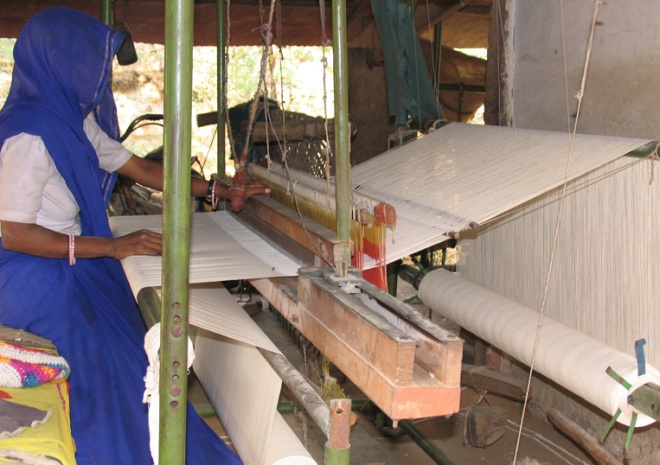
- Hand-loomed cotton makes a stunning canvas for traditional block printing
It’s not always possible to get every fabric or color in small quantities. Make sure you clarify the scope of your order at the beginning, and that you and the supplier are on the same page. Late changes can be expensive or cause a rift in your relationship.
-
AVOID SURPRISES—BE CLEAR ON COSTS.
Labor costs, even in a developing country, are often much more than designers—especially young designers—expect. Fair trade means that small suppliers like Mehera Shaw are committed to paying reasonable wages, providing for some medical expenses and keeping workers employed on a on-going basis, not just peak seasons. They also have indirect costs, like shipping and duty fees.
It’s important to take all those costs into account, along with an assessment of your market and its acceptable price-points, in order to accurately determine whether your project will be profitable.
-
BE PREPARED TO PAY 50 PERCENT--YEP, 50 PERCENT-- IN ADVANCE.
A fair trade commitment is a commitment to paying half of your costs in advance, rather than waiting for an invoice that doesn’t require payment for 90 days. Small suppliers can’t bear the financial burden of doing business with you. They have to pay their own suppliers and producers upfront.
You will be ensuring a sustainable livelihood for the artisans creating your project. Unfortunately, some Western buyers expect concessions from artisans in the developing world. But fair trade is a commitment to supporting those artisans, one that is vital to the bigger global trade picture.
-
COMMUNICATE OPENLY, FREQUENTLY AND AS CLEARLY AS POSSIBLE.
As in any relationship, open and frequent communication between you and your supplier is absolutely vital. Adopt the communication style most easily understood by your trading partners, rather than sticking to your preferred style. Don’t view differences in style as “problems.”
These guidelines are particularly valuable in international business relationships, where culture may affect how people communicate. For example, some Indian business people are reluctant to say they can’t meet a deadline, or deliver some other potentially negative response. They may respond to a question with a vague or indirect answer that Westerners misinterpret. Be patient, be sensitive to nuances, and don’t jump to conclusions. Keep rephrasing questions to obtain realistic responses.
Often, miscommunication results when a designer expects the process to work the same way a Chinese mass-production facility works, rather than the artisan’s small-scale operation. You may not be familiar with the technical, environmental and cultural challenges that affect production. That’s why it’s wise to be curious, to ask questions and dedicate yourself to learning from the artisans, as well as educating them about your concerns. Remember, trade is a relationship.
If there’s a problem with your order at any point, assume there was a miscommunication that can be corrected with input from both sides, rather than believing the manufacturer can't meet your requirements. View the conversation as a two-way effort to identify and solve a problem. Becoming angry is disrespectful, won’t help you achieve the best solution, and won’t do anything to build your long-term, trust-based relationship.
Ask neutral questions to understand what happened, what options are available, what could be done differently the next time. Ask for suggestions. Show confidence in your supplier’s ability to resolve the problem. Developing teamwork and trust is more important than placing blame—always.
BE CLEAR ABOUT WHAT YOU WANT.
It is a good idea to ask questions in that require very specific answers, on a small scale, especially when on design and technical issues.
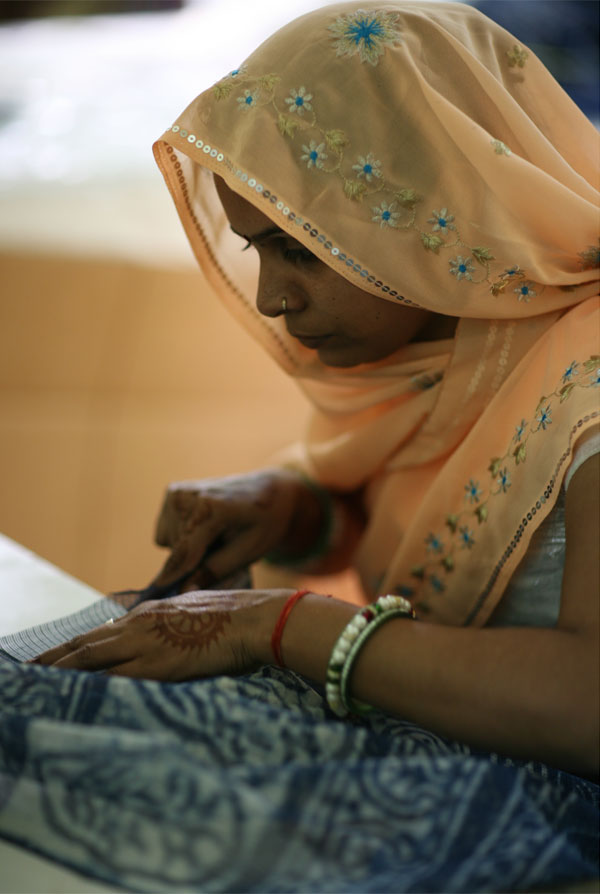
- Garments pass through many hands
Limit unnecessary words and keep communication focused on the main point. Even when your supplier speaks English, the style or level of English may be so different that he or she won't understand what information, specifically, you’re seeking. Stay involved and keep asking the same question in multiple ways to clarify the answers.
Ask open-ended, simple questions, rather than those with a “correct” answer that's easily inferred. As a general rule, an Indian supplier won’t want to give you the “wrong” answer. Instead, he or she will give you the “right” answer, even if it’s not accurate.
Bring samples and photos of your ideas. Discuss them with the artisans—often, they know much better than you how to maximize efficiency or tweak the process to achieve your vision.
-
SHARE YOUR KNOWLEDGE, GIVE FEEDBACK, LISTEN.
Just as you can listen and learn from your supplier, he or she is willing—probably eager—to learn from you, so long as you offer knowledge and feedback in a respectful, give-and-take relationship.
You may have found a supplier you like, but feel they aren't quite up to the task you have in mind. Or you and your supplier may develop an idea that’s going to require training to achieve. You’ll both benefit by working together on the challenge and improving the skills and production process.
-
VIEW THE RELATIONSHIP AS A WORK-IN-PROGRESS
Ideally, you'll want to do business together for a long, long time. Building that relationship is an ongoing process, with occasional setbacks likely. Make a commitment to communicate frequently, trade ideas and develop a long-term understanding of your supplier’s business, as well as your own. Both of you will profit by working together on products that meet your market demands and the supplier’s production requirements, while quality improves steadily and both businesses grow.
The underlying principle really is one of fair trading—the “trade” of back-and-forth sharing, developing ideas and making a business work across the full extent of the value chain.
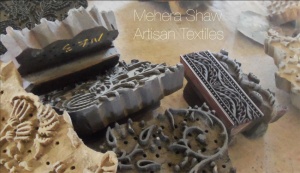
Interested in working with or finding out more about Mehera Shaw? Please visit us at http://meherashaw.com
WORLD FAIR-TRADE ORGANIZATION
"Fair Trade is a trading partnership, based on dialogue, transparency and respect, that seeks greater equity in international trade. It contributes to sustainable development by offering better trading conditions to, and securing the rights of, marginalized producers and workers."
“Fair Trade organizations have a clear commitment to Fair Trade as the principal core of their mission. They, backed by consumers, are engaged actively in supporting producers, awareness raising and in campaigning for changes in the rules and practice of conventional international trade."
Leave a comment
Comments will be approved before showing up.









